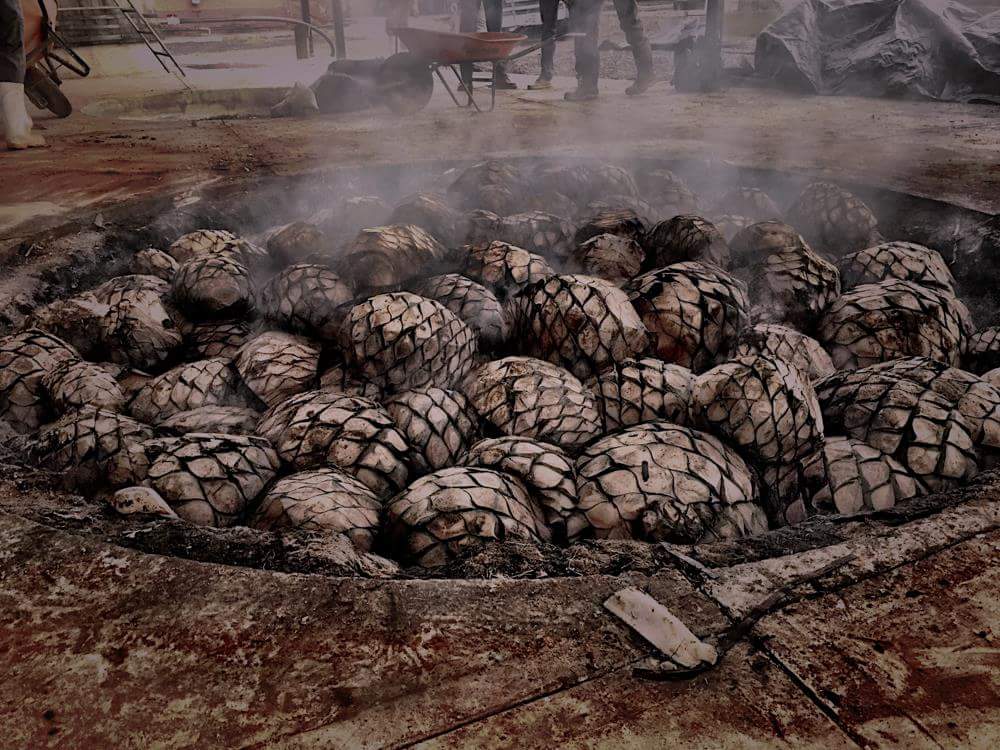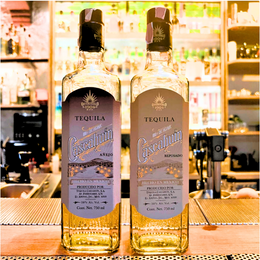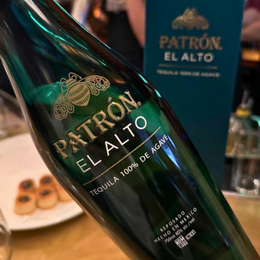
Mezcal - a still mostly esoteric term within Asia - has been growing in interest within the region, with no surprise that the category is being led by its more fashionably popular subset, Tequila.
Most people in Asia have either not heard of the term Mezcal or do not yet know that Tequila is but a type of Mezcal. Despite the flashy celebrity endorsements and brands, much of it has fallen on deaf ears here, given the pragmatic reality that there just isn't really anywhere in the region to get your hands on good Mezcal. A curious palate explorer may venture into the web to find out more about Mezcal but so long as you can't actually try it, well that snuffs out most of the excitement.
Ultimately, it's about access. And the same can be said about other categories of alcohol from whiskies to rums, although with those spirits you could still reliably pick something good up at at least a handful of stores. But it could certainly be better. Perhaps the most successful category thus far in Asia remains wine, which is available by the aisles in grocery stores and wine shops can be found in most malls. It is unfortunate then that the only vague impression most people have of Mezcal is the cheap Tequila associated with teenage late night benders, of club nights with no recollection and house parties where you might as well have kissed the house pet.

In Asia, you'd be hardpressed to find Tequila or Mezcal specialist stores, ironically the weight falls on Mexican restaurants to introduce the Mexican craft spirit to drinkers. (Image Source: Expat Choice)
So if the lack of access is holding Mezcals and Tequilas back, what then can the category thank for its slow and terribly overdue rise in interest (we haven't reached the level where I can use the word "popularity")? I think as with everything that is the case in Asia, the resurgence in popularity of Mexican cuisine (here the use of the word "popularity" is more justifiable) is probably who Mezcals and Tequilas owes its appreciation to. It's the typically the main places a mass consumer could incidentally find themselves trying some of the stuff and realise that perhaps this time, it isn't a precursor to a multi-day bender, a blackout or a photo haunting them years later of them kissing Meimei, the family's Westie terrier.
Yet, here I make my case for Mezcal - it is more than that "oooh this is better than I remembered it to be", certainly more than "3..2..1..we're all doing shots!". It's a highly artisanal craft spirit that reflects the diverse terroir of Mexico, one that contends tradition with and against modernity, full of vibrance and creativity, and is a world of its own where craftsmen hold up the fight against the Big Man.

Agave is cooked in an earthen pit which gives rise to Mezcal's smoky, earthy vegetal flavors. (Image Source: Long Island Lou Tequila)
To get it out of the way, Mezcal refers to spirits made from the agave plant that is cut to its core, roasted in earthen pits, crushed and then fermented and distilled - creating a spirit that is typically smoky, earthy and vegetal. While Mezcals can make use of any variety of agave plants (with more than 30+ species used for Mezcals) and have less restrictions on how they are crafted, Tequilas are more specific. Tequila follows a more standardised process (which swaps out roasting the agave for steaming instead) and must enlist the use of specifically the Blue Weber agave varietal, and can only be produced in five Mexican states. This results in Tequila being generally more similar in taste with less variation, and also typically sans the smoky taste associated with Mezcals.
Because of the sheer variety in what varietal of agaves that can be used for Mezcal-making, that creates a wide spectrum of how Mezcals can taste, and then toss in the variations in fermentation and ageing and you get quite the multiverse in what is possible. You can quickly see how Tequilas are just the tip of the iceberg and once you get to the Mezcals, it's a world unto its own.

I'm not sure even the combined forces of Kendall Jenner, Dwayne Johnson and George Clooney can reach out to drinkers in Asia. Yet, a supermarket stocking more Mezcals will certainly do the job. (Image Source: MySA)
So where do these celebrity Tequilas come in? The reality is that much like their Bourbon compatriots up north, Tequilas and Mezcals do have their own bulk producers. Most Bourbon brands come from the very same production facility, with tweaks to the mashbills being the most common tool to create differences in output. Tequilas and Mezcals are no different. As demand for Tequilas and Mezcals has steadily risen, most of the agave-based spirit is produced from the same major facilities, with simply tweaks to the production process to create different brands and labels. That's the Big Guy.
Yet, don't lose hope just yet. While Tequilas have little room for variation, Mezcals on the other hand, has its own tale of craftsmanship - enter Del Maguey.
Del Maguey is an unmissable feature of the Mezcal world, the brand's name translates to "of Agave", and helped lead the charge in creating awareness, interest and eventually the popularity of Mezcals in the US. Prior to Del Maguey's entry, Mezcals making their way to the US were often watered down, made in ambiguous bulk, with no transparency or clear provenance, and were generally of poor quality.

Ron Cooper, the artist who incidentally started a Mezcal movement. (Image Source: Taos News)

Ron Cooper's work explores the nature of light. Hmm, I have to say I prefer the Mezcal. (Image Source: ARTNews)
The brand itself was started in 1995 by artist Ron Cooper, who primarily created art that would go to major galleries, but had wanted to better study and be inspired by the traditional weaving crafts of Mexico. There he would encounter Mezcals at various junctures over 30 years in his travels to Mexico. Finally on a fated road trip with several friends, Ron would begin to explore and seek out the craftsmen who made Mezcals.
As you might imagine, he ended up bringing back to the US many samples of various Mezcals he collected, which eventually became the Del Maguey. Yet, what truly made Del Maguey the tour de force that it is, is its focus on single village mezcals - each bottle made clear to drinkers where their Mezcal came from and from which agave varietal. The transparency and emphasis on purity and provenance, reflecting the beauty of the local terroir and craftsmanship, was eventually what helped not simply Del Maguey, but the Mezcal category grow in appreciation. In 2016, Ron Cooper agreed to partner with drinks giant Pernod Ricard to grow the Del Maguey brand.

The Del Maguey lineup now spans close to 20 expressions, offering drinkers a taste of each single village's local terroir and craft. (Image Source: Difford's)
One simply cannot talk about Mezcal without talking about Del Maguey.
Today, I have in hand a bottle of Del Maguey's Single Village Mezcal, specifically made from the Tobala varietal of agave, which was hand-crafted around the fruit trees and rose bushes of the Santa Maria Albarradas village. It it naturally fermented with wild yeast found on the agave itself and then twice distilled in wood-fired copper stills. The Tobala varietal itself is known to be one of the smallest agave species (roughly eight Tobala agaves have the equivalent yield of one Espadin agave, which is the most commonly used varietal) and is less abundant, typically growing in more difficult terrain. Yet it possesses strong and complex fruity flavors, which earns it the nickname "King of Agaves" or the "Truffle Agave". This one from Del Maguey is bottled at 48% ABV.

Del Maguey Tobala Single Village Mezcal, 45% ABV - Review
Color: Clear

Aroma: Much gentler than expected, yet highly aromatic - potpourri, rose water, agave syrup immediately strikes me, alongside light touches of white florals and flower nectar. The smoky notes begin to emanate and engulf the nose, plumes of gentle ash, clay and soot. There's a deep earthiness here that is reminiscent of leftover used charcoal, heated claypots, cigar ash. The ash possesses a sort of duality of leafiness of tobacco leaf and also a minerality of chalk and flint. Light touches of burnt rubber as well.

Then there's a gentle herbaceousness that is leafy, vegetal - think parsley, spinach, kale; and yet syrupy, forest honey and agave syrup. Curiously, there is an ever present touch of sourness that is reminiscent of well-aged parmesan, day old yogurt or even a beer left out too long. It's best described as somewhat funky and sour yet creamy, you'd associate this with something that's expired. It adds a layer of umami to an already complex mix.

Taste: Heftier than you might imagine, it's got quite the buttery viscosity. A very even-handed mix of sweet, vegetal, earthiness and umami. It starts off with a hit of simple syrup, which evolves into something more vegetal - aloe vera, cactus, mint jelly, eucalyptus, green tomatoes. Very leafy and succulent. Like you bit into your decorative cactus ornament. This is accompanied by more earthy smoke - rich, aromatic ash. The same clay earthiness and coastal minerality pushes forth.

Something heavier, mineral-rich, slightly sweet and grassy vegetal that can best be described as "river water".
There's a light touch of citric zest and then again the same umami sourness and tartness but much more restrained now and more towards day old yogurt and parmesan. It could easily be thought of as a dash of fish sauce and a touch of oyster sauce - somewhat coastal salinity, umami, slightly sour and just a little bit of sweetness. Someone commented "river water", which is an awfully specific note, and yet that's spot on. A sort of heavier, more mineral-rich, slightly sweet, lightly herbaceous water you'd easily taste from a rainforest river.

Finish: Clean, medium length. Mostly a continuation of the light vegetal agave syrup sweetness, salty umami oyster sauce, and the same sweet aromatic ash.
My Thoughts
This expression from Del Maguey was exceptionally easy to drink - it was approachable, balanced, with a good harmony of flavors that married well together. It has a great amount of complexity and bold notes that juxtaposed one another well - the lighter sweet and vegetal top notes were complemented with the deeper, richer earthy, ashy, and umami base notes. That well-rounded integration made it a very wholesome taste experience that had no off notes.
My Rating |
🤹♂️This excellent expression from Del Maguey is well-rounded and integrated with a great balance of sweet and vegetal top notes complementing the richer deeper earth, ash and umami base notes. A real classy juggling act. Throughout, a silky smooth texture. Equal parts easy drinking and thought provoking. |
That said, I did find it somewhat amiss that this Tobala expression did not showcase any fruity notes; something that the Tobala varietal of agave typically promises. I've heard reviews that talk about rich, sweet mangoes, unfortunately that wasn't my experience. Now, that doesn't bring down my appreciation for this well-made Mezcal, it was still very much a great sipper that was equal parts easy to drink and thought-provoking.
Kanpai!

@111hotpot








